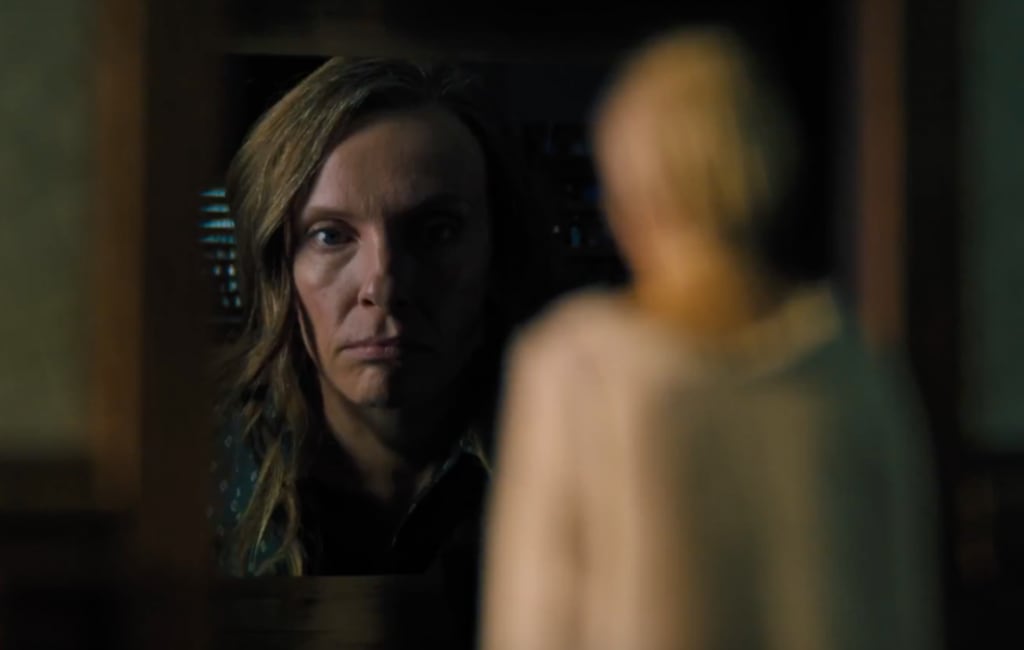
The majority of modern horror movies aren’t scary. Maybe movies like Insidious have their moments, but even the popular horror franchise has lost itself to the most damaging cliché in horror cinema.
The jump scare.
The jump scare is precisely why horror movies aren’t scary anymore. My friends who read this might think, hold on. Sammi, you cover your eyes and ears when you see horror movies. That’s true. I may jump when I see movies like The Conjuring or IT, but I can’t remember any of those scares. I didn’t go home thinking about those movies. I wasn’t scared of a creepy nun or clown hiding in my closet when I went to bed at night. I should say that both those movies are considered scary by many. However, I can’t remember a single scary moment from either of them. To show how jump scares don’t make for effective scares, let’s look at a movie that genuinely terrifies me to this day.
I saw Hereditary with one of my good friends, and we walked out speechless. She slept over my apartment and we stayed up until late in the morning talking about how freaked out we were to look in the dark corners of my room. We would be trying to sleep when suddenly one of us would shout, “Wait were those people cult members too? Wait, I forgot the symbol was on the phone pole, that whole thing was planned!?” There are still some nights when I take off my glasses to sleep and imagine seeing that scary grandma standing in the corner of my room with a freaky smile on her face.
I remember almost every scene of Hereditary vividly. That means I vividly remember a lack of jump scares. There may have been three in total that I can think of. What’s more, those aren’t the scary parts. What Hereditary does is use the camera and tremendous performances by its cast to create images that haunt the audience. The first real fright I got was early on. I should say now that if you don’t want spoilers, you should click away. The beginning starts with the death of our main character’s mother. Annie, played brilliantly by Toni Collette, finishes going through some of her mother’s things in a cardboard box and turns of the light as she leaves. When she looks up, we are treated to a simple shot of the corner of the room. Just barely there, lurking in the shadows, is her mother. The old woman is just standing there smiling. She isn’t menacing at all. She looks like a normal grandmother. But what made me and the audience gasp in fear was how the director used lighting and atmosphere. There was no music playing, no sudden camera tricks. It seems like a regular shot, and then your brain processes that there is a person there. A person who shouldn’t be there. The wrongness of the situation hits in a few milliseconds and then the moment is over. Still, it stuck for the rest of the movie.
This is how Hereditary works. It doesn’t startle you, (well maybe those occasional clicks from Charlie throughout make you jump), but instead it lets you stare at a shot until you process that what you’re looking at isn’t right. It’s making your brain do the legwork instead of throwing sudden and graphic imagery and noises at your face. This happens a few times in the last twenty minutes of the film, the point where things get dialed up to eleven.
It becomes clear throughout that the grandmother was the leader of a cult. Before her death, she set up a scenario wherein her grandson, Annie’s son Peter, is to be possessed by a demon named Paimon. Annie tries to stop this chain of events, but becomes possessed by the cult herself. When Peter wakes up from a nap to set off the climax, the camera lingers on a wide shot for almost a minute. Peter is sitting in his bed looking around, rubbing his eyes, doing all the things a normal person does when they wake from a deep sleep. Slowly, the audience murmurs turned into exclamations of fear. Then I noticed; in the corner of the bedroom ceiling, possessed Annie is clinging to the wall in an odd position. It was terrifying. The room is dark, and she only stands out the slightest bit because her outfit is all white. She stays there, completely still, and the more you look, the more frightening it gets. People were whisper-screaming at Peter to run, but he never saw his mother.
Even if he could run, there would be no escape. Another similarly set up shot shows the exterior of the family’s house. At first, it’s normal. This is the house at night. It’s lonely, in the middle of the woods, and then you see small black shapes on the lawn and amongst the trees. It’s the cult. They don’t appear in jump scare fashion, they are just there. Once you notice them, dread sets in; Peter can’t escape. Before he even realizes he’s in danger, we know he’s doomed. It’s hopeless and crushing to watch him when he finally confronts the cult. That’s where we get to the smiling man.
This is when I officially curled up in a ball, turned to my friend, and whispered, “I want to go home.” Peter stumbles downstairs and finds a naked man standing in the doorway, grinning. The man doesn’t move, and we never see him again. But his teeth stick out from the shadows. The house is completely dark and he just stands there, unmoving. Once your eyes adjust to see him, it’s too late, because possessed Annie finally charges at her son. The smiling man is terrifying. He was there at the start of the film at the grandmother’s funeral. He still had that smile on his face as he looked at Annie’s children. His appearance isn’t just another instance of the brain have a delayed reaction to something out of place, but it brings context to the whole film. The cult members have been watching and waiting this whole time. He was smiling at the funeral because he knew these events would happen. He and the rest of the cult set this up way in advance. It makes the situation more crushing. How could this family have ever escaped their fate? This demon worshipping cult planned everything from before the film even began.
Hereditary works because it doesn’t force you to look at scary images. It frightens because it makes your brain scare itself. When Peter finally becomes possessed by the demon, we see a seemingly random shot of the family dog, which hadn’t factored into the movie at all, dead on the lawn. Since everything in this movie has a purpose, I really thought hard about that scene. Then I remembered the dead animal on the deserted road from earlier in the movie. It was the dead animal that caused Peter to swerve his car as his little sister Charlie had her head out the window, slamming her head against a telephone pole and beheading her. It wasn’t a live animal, but a dead one. On it’s own, this means nothing. Paired with the random shot of the dog, it becomes clear. You realize, the cult put that dead animal on the road. They planned Charlie’s death. My brain did this legwork at around two in the morning, so you can imagine how that added an extra layer of fear to my experience.
I do scare easy, I admit. But in a way, I enjoy seeing a horror movie that makes me afraid of the dark again. It shows how well the creators crafted their film. Ari Aster has proven himself an excellent director with this film, and I want him to make another movie immediately. He understands what true horror is. The fear is simple, but believable. What our mind can create and recognize is much scarier than anything external. People don’t go home thinking giant monsters or psycho killers are going to come crashing through their window at night. But, they could just stare at the corner of their room, wondering if that’s a strange looking shadow that their brain created, or something else.






Comments
Sam is not accepting comments at the moment
Want to show your support? Send them a one-off tip.